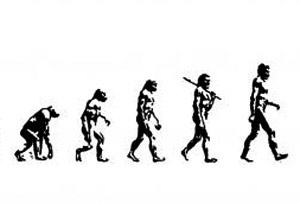
"Evolution is not about how life began, but how it has evolved."
In 1859 Charles Darwin, a British naturalist, published a book, “On the Origin of The Species by Means of Natural Selection”, which after its publication, caused a great deal of controversy that still continues today. It is the only scientific theory that has engendered so much vilification and the only one non-scientists feel they can comment on even though the overwhelming majority do not know anything about evolution.
No one questions Einstein’s theory of relativity or quantum theory, but many still question the theory of evolution even though 99 per cent of US scientists accept the theory as fact.
What is the theory of evolution and how does it work? A simple but long way of putting it is that life on earth began with one primitive species and gradually over a period of 3,500 million (3.5 billion) years, through small (or occasionally large) changes which could be passed on to the next generation (known as heritable changes) produced many new and diverse species. The mechanism for most, but not all, of evolutionary change is natural selection. Lesser mechanisms include genetic drift, sexual selection and symbiogenesis.
The process by which small changes occur is called mutation and is an entirely random event. However, natural selection is far from random. Natural selection is the process where those small changes endow the organism with favourable or deleterious traits making it more or less likely to live to reproduce. The organism with favourable traits will survive and reproduce, those with unfavourable traits will not. Eventually all of the subsequent generations will possess this trait.
Natural selection is unconscious; it cannot anticipate what changes are going to be needed to survive. The evolutionary watchmaker is blind. Evolution is also not about how life began, but how it has evolved.
One should also realise that the evolutionary time scale is measured in hundreds of thousands to millions of years. One only has to look at the common dog which arose from the Asian grey wolf approximately 15,000 years ago and see the enormous variations that have been produced by unnatural selection. Could not the same thing happen over millions of years by natural selection? Evolution therefore is gradual, it produces different species over time, there is a common ancestor and there is natural selection.
The theory does not predict that species will be constantly evolving or how rapidly they will evolve. Some groups like whales and humans have evolved “rapidly”, while others have hardly changed over hundreds of millions of years. When the selection pressure is strong it can occur quickly, but once a species becomes well-adapted evolution will slow down.
Evolutionary biology is a historical science that depends not on a single piece of evidence, but on the convergence of numerous lines of inquiry. It draws on the knowledge of such fields as geology, palaeontology, biogeography, comparative anatomy and physiology, embryology, molecular biology and genetics to name a few. Detectives using various branches of science can reconstruct a murder scene 30 years later using the same technique of convergence of evidence.
One of the strongest pieces of evidence for evolution is the fossil record. Fossils are traces of once living organisms. The process of fossilisation is an uncommon occurrence and usually requires death where sediments (of rivers, lakes, etc) or volcanic ash can be deposited. Over time the hard parts of the organisms become impregnated with or replaced by minerals leaving a cast of that organism, although less common, soft-bodied organisms have also fossilised. Some insects have been preserved in resin from trees. The ages of fossils can be deduced from the geological strata in which they are found and with radiomimetic dating. From the field of geology we know that there were different geological periods stretching over billions of years, with the oldest layers at the bottom and the youngest on top.
According to evolutionary theory, certain testable predictions can therefore be made. They include the following:
- The deepest and oldest layers of rock would contain fossils of the more primitive species, while the younger rocks would contain more complex fossils. These younger rocks would also contain organisms resembling present-day species and we should be able to see some species changing over time, i.e. showing descent with modification.
- We would be able to find in the fossil record some cases of speciation (formation of new species), with one line of descent dividing into two.
- We should be able to find “transitional forms” of species that link together major groups, suspected of having a common ancestry and these forms should be found in layers of rock that date to the time when they separated.
- We should see imperfection in design and adaptation.
The fossil records confirm these predictions. Starting with the Cambrian age rocks, the layers have shown that about 600 million years ago simple organisms like the jelly-fish, worms and sponges arose; fish came about 400 million years ago and amphibians come about 50 million years later. Fifty million years after, reptiles appeared and birds about another 50 million years later. The first mammals showed up about 250 million years ago. Humans are very recent as our lineage branched off from other primates about 7 million years ago. In order to disprove evolution, one only needs to find the fossils of birds in the amphibian geological stratum, but to date none has been found.
This content is restricted to site members. If you are an existing user, please log in. New users may register below.


